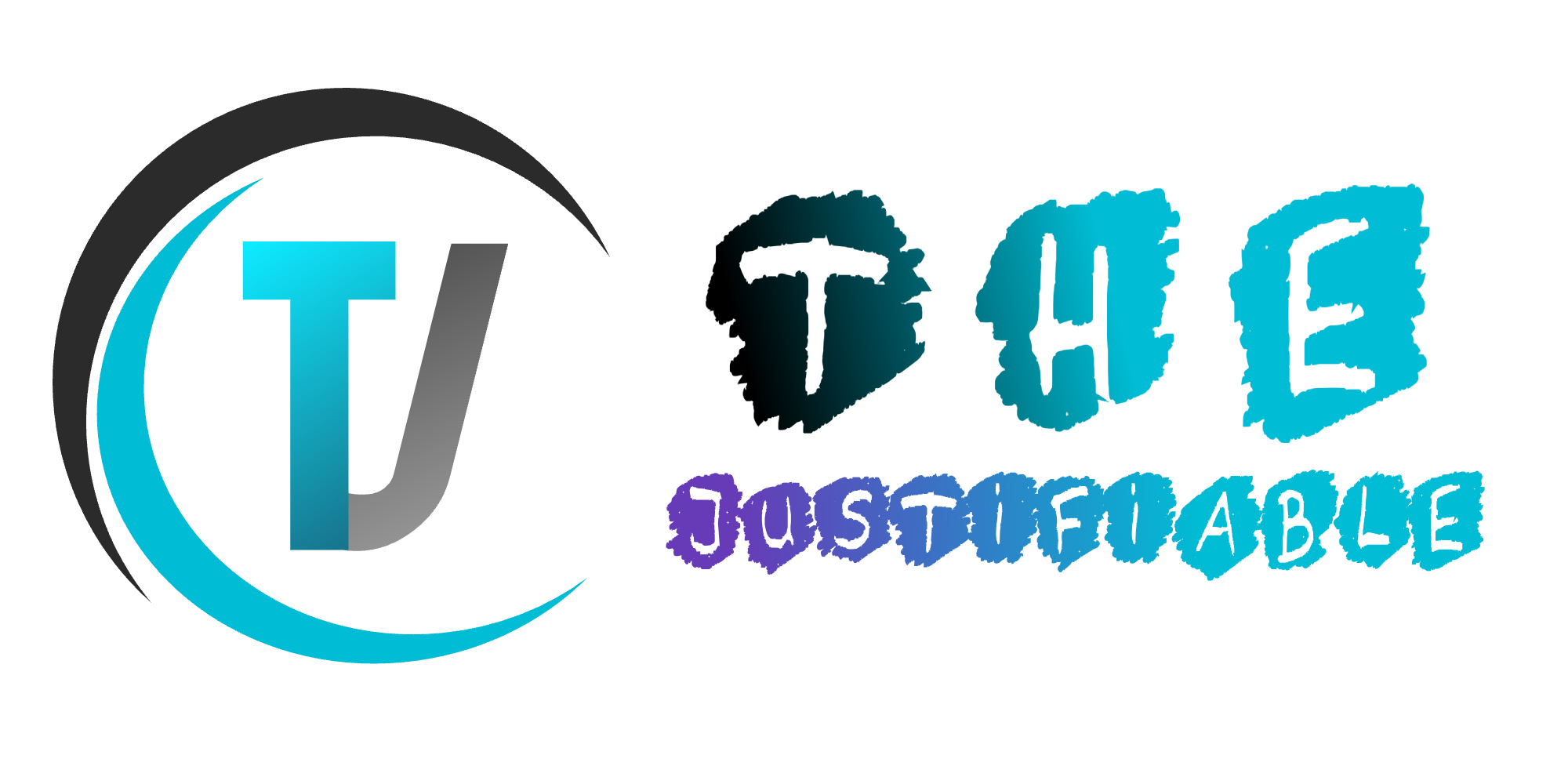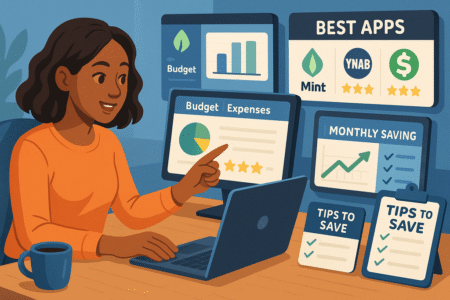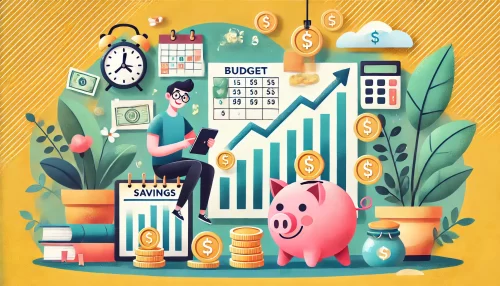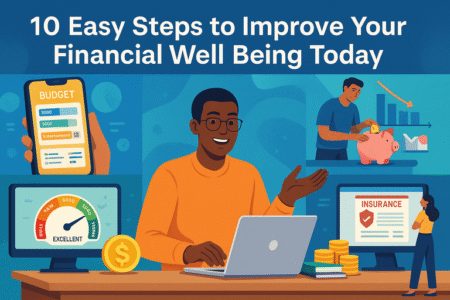Table of Contents
Personal finance help can feel overwhelming when money seems to slip through your fingers faster than you can save it. Are you struggling to pay off debt while still trying to build savings?
Wondering how to create a budget that actually works in real life? Or maybe you’re curious about where to invest without taking unnecessary risks.
This guide breaks down eight expert solutions that go beyond surface tips, giving you strategies you can actually put into practice.
1. Build A Realistic Budget You Can Stick To
A budget isn’t about restriction; it’s about giving your money a job so it works for you. The key is to keep it flexible, simple, and realistic enough that you don’t abandon it after a few weeks.
Use The 50/30/20 Method For Balance
I suggest starting with the 50/30/20 method because it’s one of the most straightforward budgeting frameworks. Here’s how it works:
- 50% of your income goes toward essentials (rent, groceries, bills).
- 30% is for wants (eating out, hobbies, entertainment).
- 20% is saved or used to pay off debt.
The beauty of this rule is that it creates balance. You still get to enjoy your money without guilt, while also keeping your long-term goals in play. If you make $3,000 a month, you’d spend $1,500 on needs, $900 on wants, and $600 toward savings or debt.
This isn’t set in stone. If your rent eats up more than half your income, adjust by trimming from wants or aiming for a 60/20/20 ratio. The point is progress, not perfection. Think of it as a starting line you can refine as your situation changes.
Track Spending With Budgeting Apps
Budgets fall apart when you don’t actually see where the money is going. I advise using apps like Mint, YNAB (You Need a Budget), or even your bank’s built-in tracking tool.
For example, Mint automatically categorizes your transactions, so you can see if your “eating out” category keeps ballooning. YNAB, on the other hand, takes a more hands-on approach where every dollar gets assigned a purpose — it’s like digital envelope budgeting.
When you track, you’re not just recording numbers; you’re confronting habits. That $6 daily coffee might not seem huge until you see $180 in a monthly report. Suddenly, brewing at home saves you more than you expected.
Tracking is like stepping on a financial scale. It’s not always fun, but it’s the only way to know what’s really going on.
Adjust Monthly To Match Life Changes
A rigid budget is doomed to fail. Life is unpredictable — birthdays, car repairs, or even just seasonal spending spikes can throw you off track. That’s why I suggest reviewing your budget once a month.
Here’s a quick routine that works:
- Look at last month’s spending categories.
- Identify where you went over or under.
- Shift funds around for the upcoming month.
Say you spent less on gas but more on eating out. Instead of beating yourself up, reassign some of your gas budget to dining. This keeps your budget realistic while maintaining control.
Treat budgeting like a living document, not a rigid contract. The more you adapt it to real life, the more likely you’ll stick with it long-term.
2. Eliminate High-Interest Debt Strategically
High-interest debt is like trying to fill a bucket with a hole in the bottom. The longer you wait, the more money leaks away. Tackling it head-on is one of the fastest ways to free up cash for saving and investing.
Try The Avalanche vs. Snowball Method
Both of these debt payoff strategies work — the right one depends on your personality.
- Avalanche method: Pay off debts with the highest interest rate first. Mathematically, this saves you the most money over time.
- Snowball method: Pay off the smallest balances first. Psychologically, it gives you quick wins and momentum.
I’ve seen people stick to the snowball because the emotional boost of knocking out one credit card motivates them to keep going. Others prefer avalanche because they hate paying extra interest. Neither is wrong. Choose the one you’re most likely to follow consistently.
Here’s a simple way to decide: if staying motivated is tough for you, start with snowball. If discipline isn’t the issue, avalanche will save you more in the long run.
Negotiate Lower Interest Rates With Creditors
Credit card companies don’t advertise it, but they’d often rather lower your interest rate than risk you defaulting. Calling your creditor and simply asking can work.
When you call, be direct: “I’ve been a loyal customer, but the interest rate is making it hard to keep up. Can you lower it?” Sometimes they’ll cut it by a few percentage points immediately.
If that doesn’t work, ask about hardship programs. These may temporarily reduce your rate or allow smaller payments while you stabilize. It’s uncomfortable to make the call, but think of it as a 10-minute conversation that could save you hundreds of dollars over the year.
Consolidate Loans For Easier Management
If juggling multiple balances feels overwhelming, consolidating can simplify the process. That might mean:
- Moving credit card balances to a card with 0% introductory APR.
- Taking out a personal loan at a lower fixed rate.
- Using a debt management program through a nonprofit agency.
For example, if you have three credit cards at 22% interest and qualify for a 0% balance transfer card for 18 months, you can aggressively pay down the balance without interest piling on. The key is discipline: don’t rack up new debt while paying off the consolidated balance.
Consolidation isn’t always the best move — if you have poor credit, you may not qualify for favorable terms. But when used wisely, it can turn chaos into one clear monthly payment, which is far easier to manage mentally and financially.
3. Establish An Emergency Fund For Stability
An emergency fund is your financial safety net. It’s not exciting, but it keeps you from going into debt when life throws you a curveball. Think of it as the difference between a bad day and a financial disaster.
Start With A Small, Reachable Savings Goal
I suggest aiming for a starter goal first — something like $500 or $1,000. That might not sound like much, but it covers the basics: a car repair, a vet bill, or a sudden medical co-pay. Waiting until you can save three months of expenses feels overwhelming, so start where you are.
Here’s what works: break it down. If you can set aside $20 a week, you’ll hit $1,000 in less than a year. Some banks even let you “round up” debit card purchases, dropping the spare change into savings. These little tricks are more powerful than people realize because the progress builds quickly.
When you hit that first goal, aim bigger. Eventually, three to six months of expenses in an emergency fund gives you breathing room if you lose your job or face something major.
Automate Savings Into A Separate Account
The best way to save for emergencies is to take willpower out of the equation. I recommend setting up an automatic transfer right after payday. For example, schedule $50 to move from checking to savings every time your paycheck lands.
Think of it like a subscription to your own future security. You don’t cancel Netflix when times get tight, right? Treat your savings transfer the same way.
I also suggest using a high-yield savings account instead of a standard one. Many online banks offer rates around 4%–5%, which helps your money grow passively while it waits for you.
Keep Funds Accessible But Separate From Spending
Your emergency fund should be easy to reach in a crisis, but not so easy that you dip into it for a concert ticket or vacation. A separate account is key.
One simple trick is to open an online savings account at a different bank than your checking account. It takes a couple of days to transfer the money back, which adds just enough friction to stop impulse withdrawals — but it’s still there if your car breaks down tomorrow.
I like to remind people: this account isn’t for fun. It’s for “life happens” moments — job loss, medical bills, home repairs. Keeping it separate makes it clear where the line is.
4. Improve Credit Score With Smart Habits
Your credit score is like a financial report card that lenders check before giving you a loan, renting you an apartment, or sometimes even offering you a job. The good news? A few steady habits can move your score in the right direction over time.
Pay Bills On Time Without Fail
Payment history makes up about 35% of your credit score, which means every on-time payment is gold. Even one late payment can knock your score down significantly.
If remembering due dates is tough, I suggest setting up autopay for at least the minimum amount due. Most bank apps let you toggle this on in your payment settings in less than two minutes. That way, even if you forget, your payment is still covered.
Think of it this way: every on-time payment is a little deposit into your future credibility. Consistency matters more than big gestures here.
Keep Credit Utilization Low
Credit utilization is how much of your available credit you’re actually using. Lenders like to see this number below 30%, but under 10% is even better.
Let’s say you have a $5,000 credit limit. If your balance is $4,000, your utilization is 80% — and your score takes a hit. Pay it down to $500, and suddenly your score improves because you’re showing restraint.
I advise making an extra mid-cycle payment if possible. For example, if you spend $500 on your card this month but pay $250 before the statement closes, your reported balance is smaller — which looks great on your report.
Monitor Reports For Errors And Fix Them
One out of five credit reports has an error. That could be an old account still showing as unpaid, or worse, someone else’s debt linked to your name.
I recommend checking your credit reports at least once a year. You can get free copies from all three bureaus at AnnualCreditReport.com. If you find a mistake, dispute it immediately online — the bureaus are required to investigate.
Fixing an error could raise your score by dozens of points. It’s one of those rare “quick wins” in the credit world.
5. Maximize Income Through Side Hustles
Cutting expenses can only take you so far. At some point, boosting your income is the real game-changer. A side hustle gives you extra cash flow that can go directly to debt, savings, or investments.
Choose Flexible Gigs That Fit Your Skills
The trick is finding something you actually enjoy or at least tolerate. If you love driving, rideshare apps like Uber or Lyft might be an easy fit. If you’re handy with writing or design, freelancing platforms like Fiverr or Upwork give you a way to sell those skills.
I recommend making a quick list of your strengths. Are you good at tutoring? Teaching English online with VIPKid could be an option. Great at organization? Offer virtual assistant services. The key is flexibility — you want a hustle that doesn’t drain you but still brings in steady money.
Use Online Platforms To Find Extra Work
Apps and platforms have made side hustling much easier. DoorDash, Instacart, and TaskRabbit can plug you into immediate gigs without a resume.
If freelancing appeals to you, sites like Upwork let you browse job postings directly. You can filter by skill, budget, and time commitment. The dashboard shows open jobs, and you can submit proposals with a click.
Even selling online counts. Facebook Marketplace or Shopify can turn clutter into quick cash. I know people who cover a full car payment each month just by flipping thrift store finds.
Reinvest Extra Income Into Savings Or Debt
Here’s where most people slip: they start making extra money but let it vanish into lifestyle upgrades. I strongly recommend deciding ahead of time where the money will go.
For example:
- 50% toward debt payments.
- 30% toward your emergency fund.
- 20% for guilt-free spending.
If you make $500 in side hustle income and immediately transfer $250 to debt, you’re accelerating progress without thinking twice.
The beauty of side hustles is that even a few hundred dollars a month makes a noticeable difference. It’s not just about the income — it’s about taking control of your financial future faster.
6. Invest Wisely With Beginner-Friendly Options
Investing doesn’t have to be intimidating. The trick is to start simple, keep costs low, and focus on strategies that don’t require you to be glued to financial news every day.
Start With Low-Cost Index Funds Or ETFs
If you’re new to investing, index funds and ETFs (exchange-traded funds) are the safest training wheels. Instead of betting on one company, you’re buying a slice of hundreds at once. That’s instant diversification.
For example, the Vanguard S&P 500 ETF (VOO) tracks the 500 largest U.S. companies. If Apple or Tesla stumbles, you still benefit from the broader market’s growth. Fees are also microscopic — often under 0.05% annually — which means more of your returns stay in your pocket.
I usually recommend setting up automatic contributions. Most brokerages, like Fidelity or Schwab, let you schedule a recurring monthly investment. Think of it like a subscription to your future wealth. Even $100 a month adds up to nearly $60,000 over 20 years at a 7% return.
Use Robo-Advisors For Automated Guidance
If you don’t want to handpick funds, robo-advisors are a smart alternative. Platforms like Betterment or Wealthfront ask you a few questions (age, risk tolerance, goals) and then build a portfolio for you.
From the dashboard, you can see your asset allocation — for instance, 70% stocks and 30% bonds. The system automatically rebalances when markets swing and reinvests dividends without you lifting a finger. It’s investing on autopilot.
I suggest robo-advisors if you’re hesitant to start because they remove the “what do I pick?” anxiety. The small annual fee (usually 0.25%) is often worth the peace of mind.
Focus On Long-Term Growth Over Quick Wins
Here’s the hard truth: chasing quick gains almost always backfires. Day trading or chasing hot stock tips feels exciting, but most beginners lose money. Real wealth comes from patience.
If you’d invested $10,000 in the S&P 500 in 1990 and left it alone, it would be worth more than $200,000 today — even with all the market crashes in between. That’s the power of compounding.
I like to think of investing like planting a tree. You don’t dig it up every week to check the roots. You water it, leave it alone, and enjoy the shade years later.
7. Cut Everyday Expenses Without Feeling Deprived
Saving money doesn’t have to mean living like a monk. The goal is to trim waste while keeping joy in your budget. Small, consistent changes make a surprising difference over time.
Cancel Subscriptions You Rarely Use
Subscriptions are sneaky. A $10 app here, a $15 streaming service there — suddenly, you’re losing $100+ a month without noticing.
I suggest doing a “subscription audit.” Log into your bank account or use an app like Truebill or Rocket Money. They scan your recurring charges and show you what’s draining your account.
Be ruthless. If you haven’t opened a subscription in the past two months, cancel it. You can always re-subscribe later if you truly miss it. I did this myself and saved $480 a year by cutting two unused streaming services. That’s a mini-vacation right there.
Save On Groceries With Smart Shopping Strategies
Groceries are one of the easiest places to overspend. I recommend a few practical tricks:
- Shop with a list and stick to it.
- Buy store brands — they’re often made in the same factories as name brands.
- Use apps like Ibotta or Fetch to get cashback on purchases.
- Plan meals around what’s on sale instead of buying whatever looks good.
One scenario: if chicken is on sale, plan three meals around it that week. This small shift cuts costs while avoiding food waste. Over a year, these savings can add up to hundreds.
Switch To Energy-Efficient Habits At Home
Energy bills are like a hidden tax on your budget. The good news? Simple tweaks reduce costs without sacrificing comfort.
- Swap old bulbs for LED lights.
- Unplug electronics when not in use.
- Wash clothes in cold water.
- Adjust your thermostat a couple of degrees.
I did a personal test by setting my thermostat two degrees lower in winter. It shaved $25 off my monthly bill, which adds up to $300 a year — and I barely noticed the change.
These adjustments don’t feel like deprivation. They feel like being smarter with what you already use.
8. Work With A Certified Financial Planner
Sometimes the best personal finance help comes from an expert who can see your blind spots. A certified financial planner (CFP) can guide you through complex decisions and keep you accountable.
Understand The Value Of Expert Guidance
A CFP isn’t just for the wealthy. They help with everything from budgeting and debt payoff to investing and retirement planning. Think of them as your financial coach.
The value comes from their objectivity. While friends and family give advice through their own lens, a CFP looks at your actual numbers, goals, and habits — then designs a personalized plan.
It’s like having a GPS for your money. You still do the driving, but you’re less likely to get lost.
Choose A Planner Who Works In Your Best Interest
Not all financial advisors are equal. Some work on commission, which can create conflicts of interest. I recommend looking for a CFP who is a fiduciary. That means they’re legally required to put your best interests first.
During your search, ask: “How do you get paid?” Fee-only planners are often the safest bet because their advice isn’t tied to selling you products.
Websites like NAPFA let you search certified professionals in your area. Read reviews, interview a few, and don’t be afraid to walk away if someone feels pushy.
Set Clear Goals Together For Accountability
A planner is most effective when you bring specific goals. Do you want to pay off $20,000 in debt in three years? Save for a home in five? Retire at 60?
In the first meeting, outline these goals. The planner will then break them into step-by-step actions. From there, you’ll meet periodically to check progress and adjust.
Having someone hold you accountable is powerful. It’s like a personal trainer for your money — progress comes faster because someone’s making sure you don’t quit halfway.






